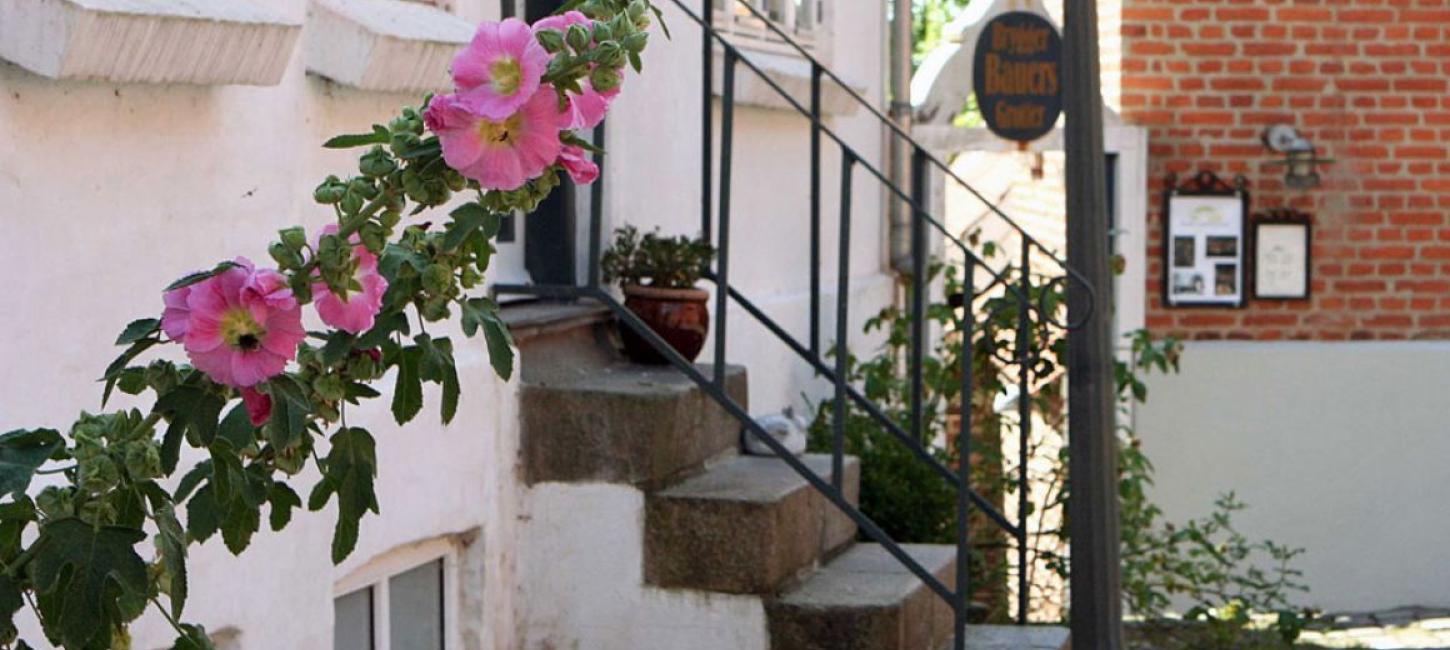
Cycling Stage Viborg-Thorning (35 km)
The Hærvej’s bicycle route follows passes Viborg, and comes from the North between the lakes and turns south out of the town to The Hald area and the Dollerup hills.
Viborg
Before pedalling off, you should really take some time to see Viborg, the gateway to the Hærvej. Viborg Cathedral towers over the town, only a few hundred meters away from the Middle Ages Dominican Sortebrødre church, and the narrow old town streets.
You can find more information on what to see and do in Viborg here...
Borgvold
From Borgvold and the cathedral, follow the bicycle path out of town. The path goes past Søndermark church, where the 10 meter long Hærvej carpet is exhibited.
Hald Ege
On your way through Viborg Plantation towards the town hidden in the forest, Hald Ege, you can see the Hærvej stone, a granite roller set on end. The text on the stone is by author Peter Seeberg “Traders, warriors, carters, coachmen, riders, drovers, travellers, horses, oxen, geese, the earnest, the good and the bad...”
The story of the Red Barracks in Hald Ege is narrated in the little museum, the Hald Ege Collection.
Hald Ege church was built in the 1960’s by Inger and Johannes Exner, while the silverwork of the altar was a co-operation with the goldsmiths Helga and Bent Exner.
Dollerup Bakker
South of Hald Ege, the route passes Hald Hovedgård manor, Niels Bugges inn and the hills of Dollerup Bakker - an area with a unique concentration of culture and natural history. Hald Hovedgård manor is built on the ruins of four previous manors, Niels Bugges Hald is a circle shaped moat by Niels Bugges inn, and on a peninsular in the lake, there are the remains of an old castle, built by the last Catholic bishop of Viborg, Jørgen Friis.
The landscape is dramatic, created by the ice mass and melting water during the last ice age, with Dollerup hills in the east, and the flat heath land in the west. The region is one of the most important borders between different landscapes and is known as the one of the jewels of Denmark’s ice age geology.
There is an exhibition in Hald Hovedgård on the region’s nature and culture, where you can see models of the landscape and gain an understanding of the effect the ice masses had on the area. There is a also a sitting area, making it a good place to take a break, and the most northerly of the hostels along the Hærvej can also be found here. It is well worth while taking a short detour to the heather clad Dollerup Bakker hills, where there is a fantastic view over Hald Lake towards Viborg. If the weather is suitable, there is a bathing area at the southern end of Hald Lake. On towards the south, there is the village of Skelhøje.
Thorning
Thorning village is particularly known for the writer Steen Steensen Blicher, who was the local priest from 1819 - 1825 and who wrote widely about the region. He lived in the rectory, which has now been converted into the Blicher Museum, which shows information about the region as well as life in Blicher’s time. The museum gives an excellent introduction to the region before continuing the journey along the Hærvej.
In Thorning you can find a supermarket and a bakery.
TO THE NEXT STAGE: THORNING - FUNDER KIRKEBY